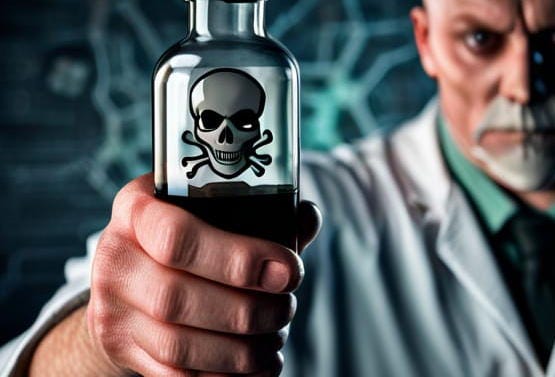Eating Dangerous Substances: Risks and Realities
Written on
Chapter 1: Understanding the Risks
The topic of consuming harmful substances for perceived health advantages is alarming and often misguided. This discussion will highlight two particularly hazardous practices that some individuals still engage in, despite the clear risks involved.

The Dangers of Drinking Bleach
It’s shocking to learn that the trend of ingesting industrial bleach (chlorine dioxide) persists. Marketed as a "Miracle Mineral Solution," it has been falsely touted as a remedy for various serious ailments, including autism and COVID-19.
This dangerous practice has been around since at least 2006, with protocols recommending frequent ingestion of the substance. Sadly, there have been numerous reports of severe illness and even fatalities linked to its use, prompting multiple warnings from health authorities, including the FDA.
Recently, a pastor was found to be selling bleach tablets under the guise of helping children with autism, albeit more cautiously than in the past. One promotional website stated that side effects like diarrhea could be interpreted as a sign of detoxification.
Please heed this warning: Do not consume bleach. It is not a detoxifying agent; your body is not designed to handle such substances.
The Misguided Use of Turpentine
Another alarming trend is the use of turpentine for supposed medicinal benefits. Historically, some have claimed that it can eliminate internal parasites. A modern health site suggests taking it mixed with sugar, promoting it as a palatable option for both adults and children.
However, the comments from individuals attempting this remedy are concerning. Many report adverse effects, yet they downplay the serious warnings found on turpentine containers, which caution against ingestion.
Let me be clear: Do not drink turpentine. It is a solvent designed for cleaning, not a health supplement.
Differentiating Between Poisons and Medicines
While it might be tempting to consider that some poisons can have medicinal properties, such as warfarin (which is used as a blood thinner), it’s crucial to recognize that these substances have undergone extensive research and are administered in controlled doses.
Conversely, no scientific evidence supports the consumption of bleach or turpentine as beneficial. The harsh reality is that just because someone claims to have benefited from ingesting a poison doesn’t mean it’s safe or effective.
Why Some Turn to Dangerous Alternatives
The struggles within the U.S. medical system, characterized by high costs and a lack of personalization, often drive individuals to seek alternative remedies. This trend can be especially strong among those with limited access to healthcare.
However, anecdotal success stories do not replace scientific validation. It is essential to approach health decisions with critical thinking and skepticism.
In summary, always consult a qualified healthcare professional. If something seems questionable, ask for clarification. Invest time in reputable sources of information, and steer clear of harmful substances.
Chapter 2: Exploring Alternative Diets
The first video discusses the advantages and disadvantages of almond milk, shedding light on its nutritional value and potential health risks.
The second video examines the pros and cons of the Carnivore Diet, providing insights into its effectiveness and health implications.